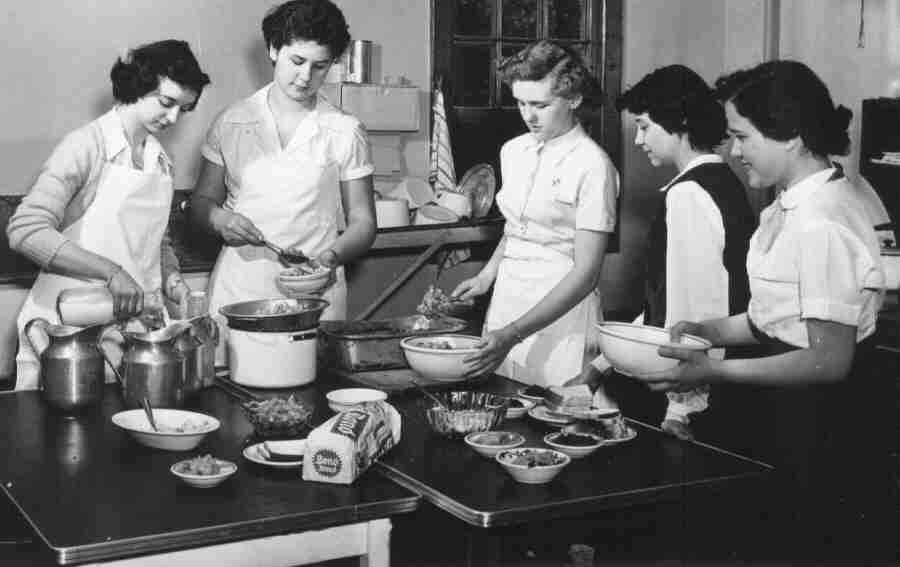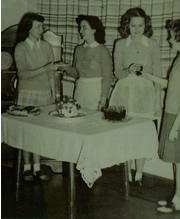Roles in the 1950's
What were the roles of women? A look at Popular Culture
Not only in television
were women's roles being depicted
into the common stereotypes though.
Magazines and Digests also carried articles targeted towards
women,
which built up the understood roles of women and obligations to their
families
as mother and wife. “The joint
endorsement of domestic and non domestic roles appeared in the numerous
stories
that offered a postwar version of today's “superwoman,” the woman who
successfully combines motherhood and career.”19
With pressure from all sides to conform, it is no wonder so many
women posed no
threats to their husbands idealized masculine/feminine understanding. This understanding that helped society return
to normalcy after WWII.
 |
 |
 June Cleaver in the Kitchen |
| Women's magazines encouraged the
wife and mother role |
A once popular media image, then
seen as against the norm. |
|
As women at home were being reassured that
their roles were
tight, and necessary, their daughters were also being taught the ways
of family
life. Encouraged to continue on the
tradition of the homemaker, stay at home mother, and perfect wife. Educational films displayed the usefulness in
a full education in Home Economics, and why these skills were
imperative for
young girls. Education was another form
of “bidding time.” As seen in the film “Mona Lisa’s Smile” girls
attended post
secondary institutions only until they were married and had a home to
run. The
education was merely a waiting period while husbands prepared for
careers that
would win bread for the awaiting family. Pressures
to conform and perpetuate normalcy started from
a very young
age. Girls
enrolled in Home Economics Classes at various ages. All being
taught how to do what was expected of them. |
 |
| Choosing
for Happiness How to find a husband in College The Home Economics Story (Part 1) Girls find a future after High School |
Why
Study Home Economics? Why should a young girl take Home Economics when mother can teach them? |
Conclusion
With
all these pressures and expectations, it is no wonder
such a large majority of women chose to conform to this idealized
“normalcy”
and present a non-threatening attitude towards family life. These roles, in their discrete, and
unassuming way, helped North America return to the normal and safe
functions of
understood and unchallenging traditions during the Cold War. The role of the housewife, or the
inconspicuous nurturing secretary or school teacher helped to return
the
war-shattered society remaining after the Second World War to a state
of
comfort and safety. At the onset of the
Cold War, these feelings of understanding traditions and fulfilling
normal
standards were important to allow all of North America to adjust to
postwar
life. By returning to prewar traditions,
and settling into feminized roles women helped all of society, men and
children
as well as themselves, appear normalized after the shocks of war. By becoming anti-virile in position and class
structure this allowed men to return to ordinary patterns of life more
easily. Although this meant the
insertion simplified standards on women, idealizing women’s roles in
such a way
as to deem them passive was the only way North American culture had to
achieve
safety, comfort and most importantly, “normalcy.”



